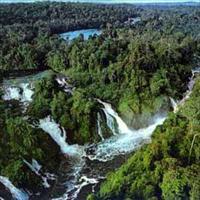Progress Verses Protection in Turkey
The constant battle between economic gains that push countries
into the twenty-first century and the environmental
concerns in preserving natural landscape continues to develop in Istanbul
Turkey. At the national government’s announcement
to turn Gezi City Park into a new commercial development space, mass uproar
rose from environmentally concerned citizens on the desolation of some of the
only remaining green area in Istanbul. Concentrating
on economic and industrial progress, the government is faced with a choice to
either continue the urbanization of its natural landscapes or protect its green
space and animal habitats. Though there
are no concrete solutions at this point, there are several options to be
considered. The Gezi Park could remain as it is to preserve the natural habitat
and green space, but then the potential loss of economic revenue holds back the
growth and modernization of Istanbul, modernization that is greatly needed. Another
solution would be to go ahead and industrialize the Gazi Park but leave various
green areas intact while creating environmentally friendly buildings. Unfortunately,
Turkey as a whole is not as environmentally conscious as other nations due to
its focus on first developing, then refining, their economic and environmental policies.
Creating environmentally friendly buildings is therefore a difficult task. The balance of progress and protection, along
with the restrictions of green technology in Turkey lead me to personally
believe that the Gazi Park should be left as a natural habitat and environmental
oasis until a way to build environmentally friendly buildings can be achieved. If
Istanbul continues to grow economically it must remain conscious of its impact
on nature and if the environment can be considered in future affairs it would
limit the amount of discord between economist and environmentalist.

A link to the article
that served as subject matter for the blog can be found at
http://www.pri.org/stories/business/global-development/environmental-concerns-at-the-core-of-turkish-protests-14213.html
.jpg)











